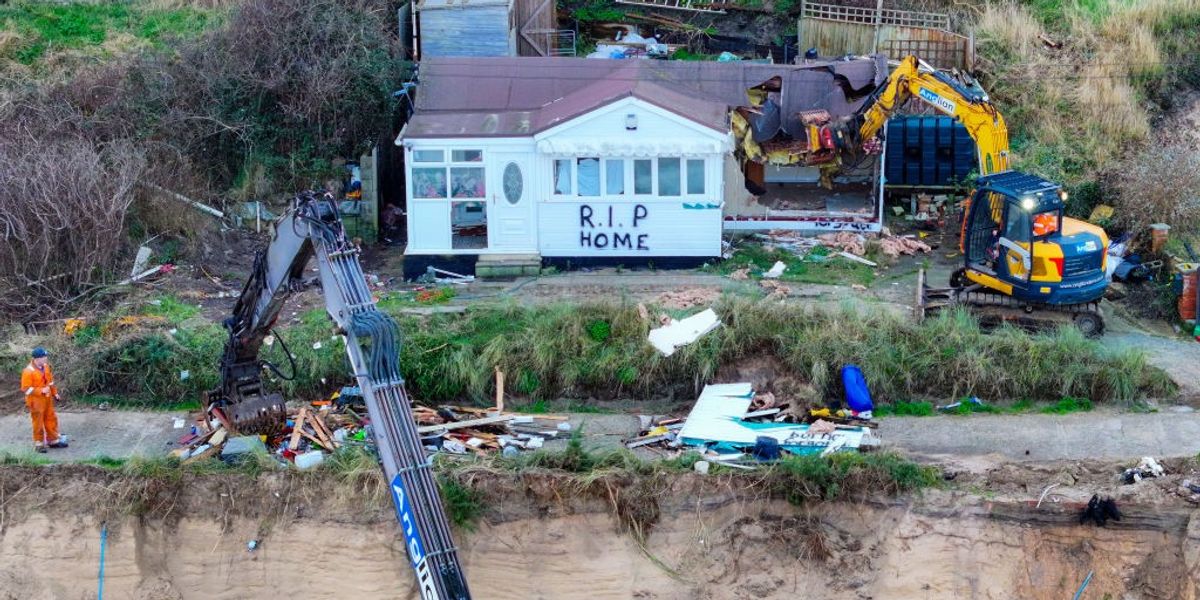New Study Warns of Dire Sea-Level Rise Even at 1.5°C Temperature Target

As the next United Nations summit for parties to the Paris climate agreement approaches, less than six months away, an alarming new study has emerged. Released on Tuesday, the research indicates that even if the global temperature increase is limited to the ambitious target of 1.5°C set by the Paris Agreement, we could still face significant sea-level rise. This change is poised to trigger widespread and disruptive migration inland, making the implications of climate change even more severe.
The Paris Agreement, established in 2015, is a crucial international treaty aimed at combating climate change by limiting the global temperature rise to well below 2°C, while pursuing efforts to cap the increase at 1.5°C above preindustrial levels by the end of this century. However, recent observations have shown that last year was not just the warmest recorded year in human history, but also the first instance where the average global temperature surpassed the critical 1.5°C threshold. This trend has led to intensified calls for governments to take substantial measures to cut back on fossil fuel consumption, which is a significant contributor to global warming.
The study, published in the esteemed journal Nature Communications Earth and Environment, argues that even reaching the 1.5°C limit may not be enough to avert disastrous consequences. In fact, the authors suggest that the current temperature of approximately 1.2°C, if maintained, could result in several meters of sea-level rise over the coming centuries. Such a scenario would inevitably lead to extensive loss of land and significant challenges for coastal populations aiming to adapt to these changes.
According to the researchers, the term ‘safe limit’ refers to a temperature threshold that would allow for some degree of adaptation to rising sea levels. Co-author Jonathan Bamber emphasized that ideally, this limit should be closer to 1°C above preindustrial levels. He explained that if sea-level rise accelerates to rates of 1 centimeter per year, it would create immense challenges for adaptation and could ignite massive migrations of populations on a scale previously unseen in modern civilization.
Chris Stokes, the lead author of the study and a researcher at Durham University in the United Kingdom, warned that such rates of sea-level rise could occur within the lifetimes of today’s youth. With a global population currently estimated at around 8.18 billion people, the ramifications of these findings are particularly concerning. The study highlights that continued mass loss from ice sheets poses an existential threat to coastal communities, with approximately 1 billion people living on land less than 10 meters above sea level and an estimated 230 million residing within just 1 meter of sea level.
Without adequate adaptation measures, the study warns of dire economic consequences. It estimates that a conservative rise of 20 centimeters in sea levels by the year 2050 could result in annual flood losses exceeding $1 trillion for the world’s 136 largest coastal cities. Co-author Rob DeConto from the University of Massachusetts Amherst echoed this sentiment, stressing that the rapid changes in ice sheets should be viewed as permanent risks over generational timelines. He articulated that even if global temperatures return to preindustrial levels, the recovery of ice sheets could take hundreds to thousands of years, with some regions potentially never recovering until the Earth transitions into its next ice age.
Despite the urgency of these findings, not all reactions have been alarmist. Stokes shared a note of optimism, pointing out that the state of the ice sheets was considerably healthier back in the early 1990s, when global temperatures were about 1°C above preindustrial levels and carbon dioxide concentrations were around 350 parts per million. In contrast, current levels have surged to approximately 424 parts per million, indicating a concerning trend of rising greenhouse gas emissions.
This study is part of a growing body of research that paints a grim picture of the climate crisis, particularly regarding sea-level rise. Another recent study published in February in the journal Nature revealed that glaciers have been losing an average of 273 billion metric tons of ice annually since the year 2000.
In light of these findings, some policymakers have been criticized for their response to climate change. Notably, the United States, historically the largest contributor of greenhouse gas emissions, has been criticized for its efforts to bolster the fossil fuel industry. Following his return to office, U.S. President Donald Trump declared an 'energy emergency' and withdrew from the Paris Agreement, a move that has raised concerns among environmental advocates.
In response to the new study, Scottish ecologist Alan Watson Featherstone took to social media to express his dismay at both U.S. and U.K. governments, stating that the current trajectory of climate policy is alarmingly inadequate and could be viewed as a 'suicide course' for contemporary human culture.




























